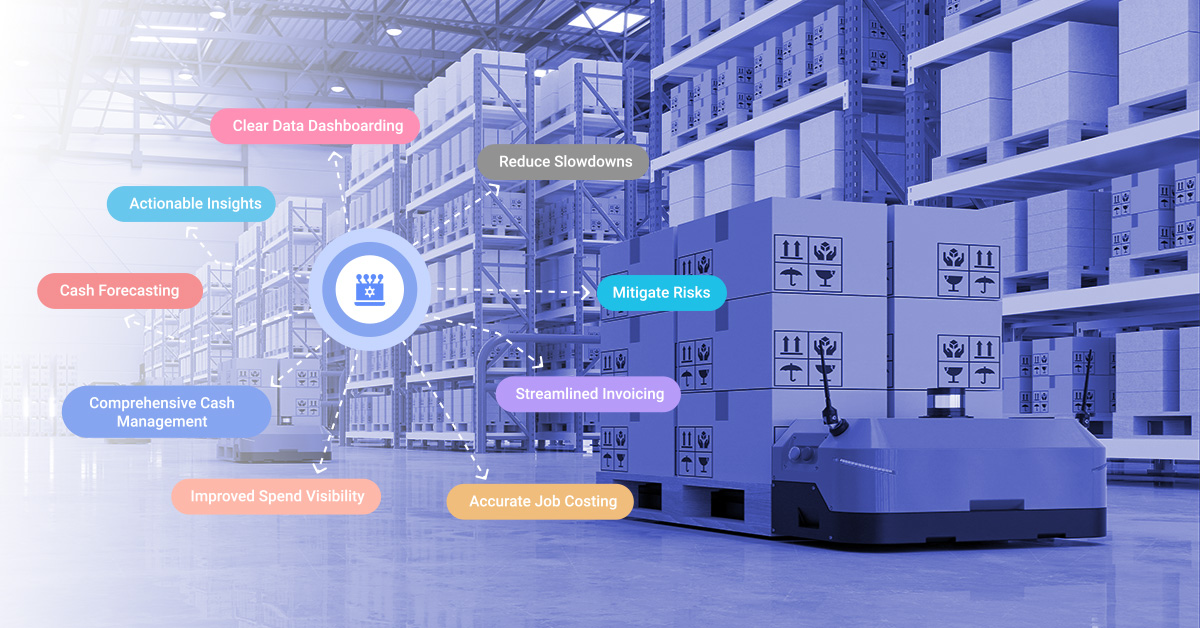9 Benefits of Supply Chain Integration


Many growing businesses hesitate at the initial cost of optimizing their supply chain. They mistakenly believe that their current sourcing model is sufficient. The cost of manual processes and the risk involved due to the lack of transparency are holding their organization back.
Instead of letting the initial investment of supply chain integration be a cause of concern, leadership needs to focus on the benefits.
Luckily, there are plenty.
This piece will highlight the 9 benefits of integrating your supply chain. That way, you remove any anxiety around the investment and feel confident in your decision to improve sourcing in your organization.
What Is Supply Chain Integration?
Supply chain integration (or procurement integration) connects the various systems and workflows needed for sourcing in your organization. While there is a multitude of great applications designed to streamline processes like invoicing, vendor management, and inventory, they don’t necessarily connect automatically.
This can result in multiple data silos, requiring manual tracking, combination, and movement of data across various systems, posing unnecessary risks. The solution is to connect these systems with integrations designed to bridge the gaps.
Is Supply Chain Integration Affordable?
Enterprise-level procurement platforms are indeed expensive. These highly developed systems are designed to handle various supply chain demands for large-scale organizations. But they’re not your only (or the best) option.
Small businesses looking to connect their supply chain can use low code platforms to quickly build custom apps and integrations designed to improve processes. This gives them the power of supply chain integration at the enterprise level without the enterprise price tag.
What Are the Benefits of Supply Chain Integration?
If you’re on the fence about whether or not it’s time to upgrade your supply chain and connect disparate systems, you won’t be after reading this. These nine benefits will show you how integration helps businesses conquer supply chain challenges.
1. Clear Data Dashboarding
Pulling data from multiple disparate systems can be a mess. It can take days or weeks to pull reports. Someone then has to break that data down and interpret it before translating it into something universally understood by the organization.
With supply chain integration, you can view data from a single access portal. Data can be scrubbed and organized, so it’s easily understandable by anyone in the company.
2. Actionable Insights
With connected workflows and platforms, you’ll get access to data in real time. This gives you the power to make actionable insights quicker. Whether you notice a shift in vendor performance, delays in your supply chain, or cost fluctuations, you can quickly pivot sourcing into a strategy process. This keeps your supply chain secure while protecting your bottom line.
3. Cash Forecasting
Manual processes cloud insights, making it hard to determine actual spending. This puts businesses at a huge disadvantage. Overspending can damage vendor relationships, increase expenses, and put projects or your entire business at risk.
Integrating your supply chain gives you a clear picture of purchasing data, helping avoid costly cash shortages. You’ll have better insights into cash-in/cash-out estimates. You may even find surpluses in your budget you can use to fund value-added initiatives.
4. Comprehensive Cash Management
How much is sourcing costing your organization? While it’s true that procurement is a foundational element of any organization, that tends to come at the cost of bloated expenses. Unapproved or maverick spending is the main culprit.
By integrating your supply chain, you’ll create an accurate snapshot of expenses. This will help you remove unnecessary purchases and streamline the approval process. Plus, you’ll reduce unnecessary fees by combining purchases and paying invoices early or on time.
5. Improved Spend Visibility
Most growing businesses without an integrated supply chain lack visibility into their spending. This opens the door to unauthorized purchases, and vendor discounts may be missed due to separate department POs.
With supply chain integration, you can easily track purchasing. As a result, you can see what each department spends and what they spend it on. Tracking these trends gives you insights on how to improve purchasing, saving your business time and money.
6. Accurate Job Costing
Improper project budgeting can prevent developments from stalling, burn through your budget, and put your organization at increased risk. By integrating your sourcing, you’ll get a better idea of how much projects will cost. And you can better track the cost of labor, materials, overhead, and other direct/indirect costs.
Ultimately, with precise job costing, you’ll keep your projects within budget. That means you’ll get to market faster with less waste to see a quicker return on your project investments.
7. Streamlined Invoicing
Manually processing invoices is a time-intensive and wasteful process. Errors and delays can cause fees. And those fees add up quickly. Plus, you can damage vendor relationships. That can lead to your vendor deprioritizing your needs. Finally, manually processing invoices wastes labor costs while preventing your employees from focusing on value-added activities.
With integrated sourcing, you can streamline invoicing. Automate RFPs, POs, and Approvals. Streamline end-to-end purchasing and get invoices paid faster. This will improve your vendor relationships. More importantly, you’ll eliminate late fees and potentially get early payment discounts.
8. Mitigate Risks
Storing your sensitive data in spreadsheets puts you at increased risk. This is particularly true if your team is sending access to those spreadsheets via email. A single misclick or undetected malware can put that data into the wrong hands.
Integrating your supply chain builds secure bridges between platforms. It also removes people from many of the workflows. The fewer people involved, the less chance for mistakes to happen. Additionally, many platforms and integrations out there provide an added level of security. This keeps your sensitive information even more secure.
9. Reduce Slowdowns
Manual processes slow things down. Every time there is a human touchpoint in your workflow, there’s the potential for costly bottlenecks. This is especially true with the approval process. Leadership often doesn’t have the time to review every PO. So, they often sit waiting to be done in batches. This slows down time to market, reducing the agility of an organization.
Robots do some things better than people. For example, robotic process automation (RPA) and integrations working together in your supply chain can automate the entire approval process. Automated approval and flagging for POs simplify purchasing.



